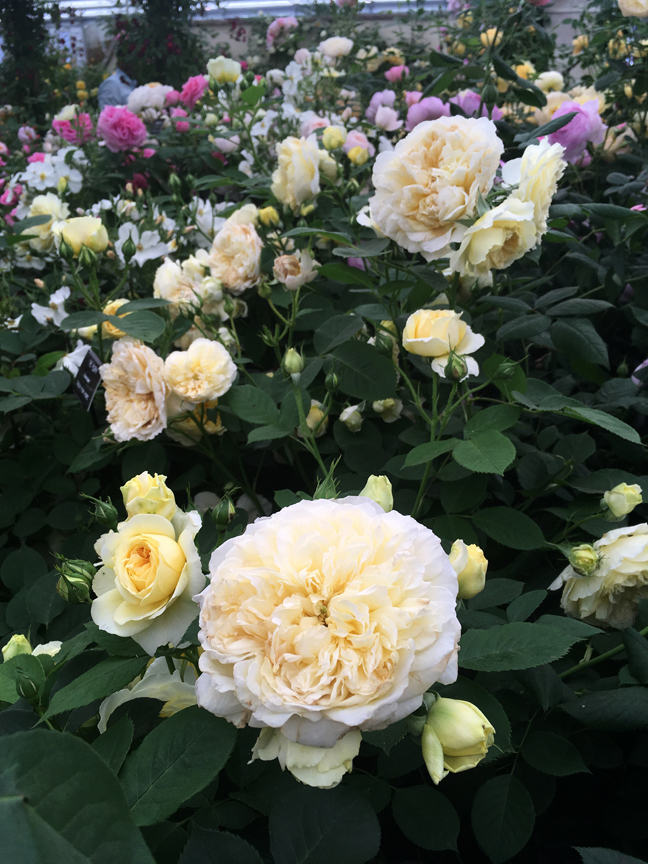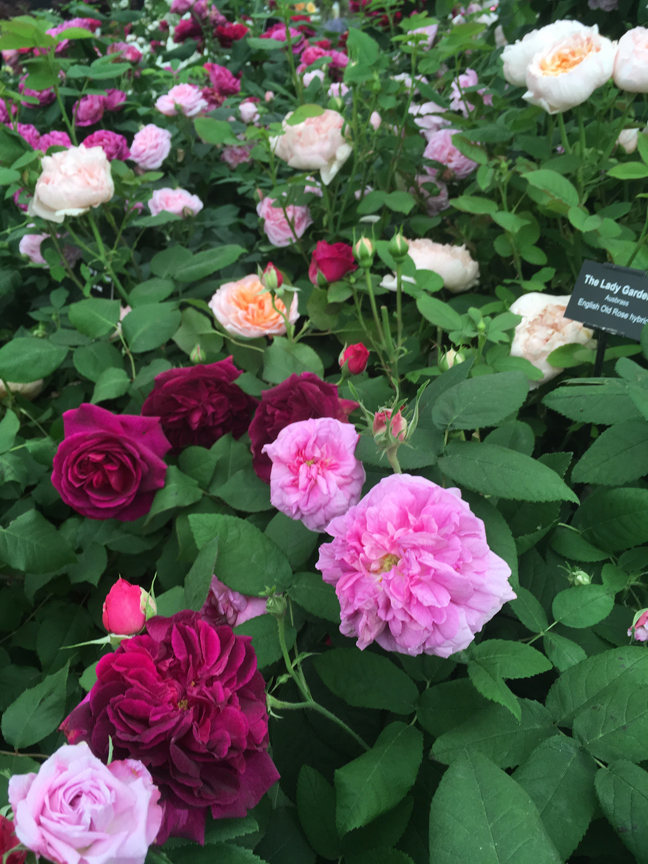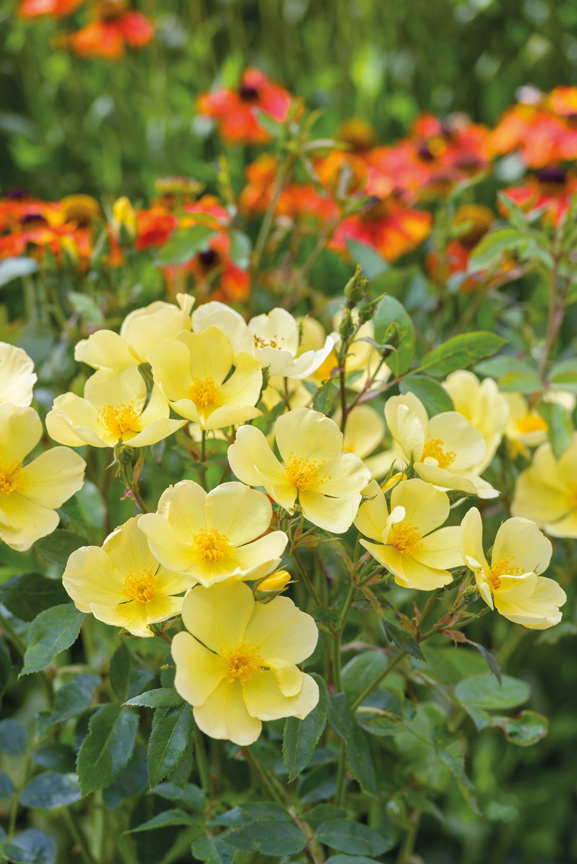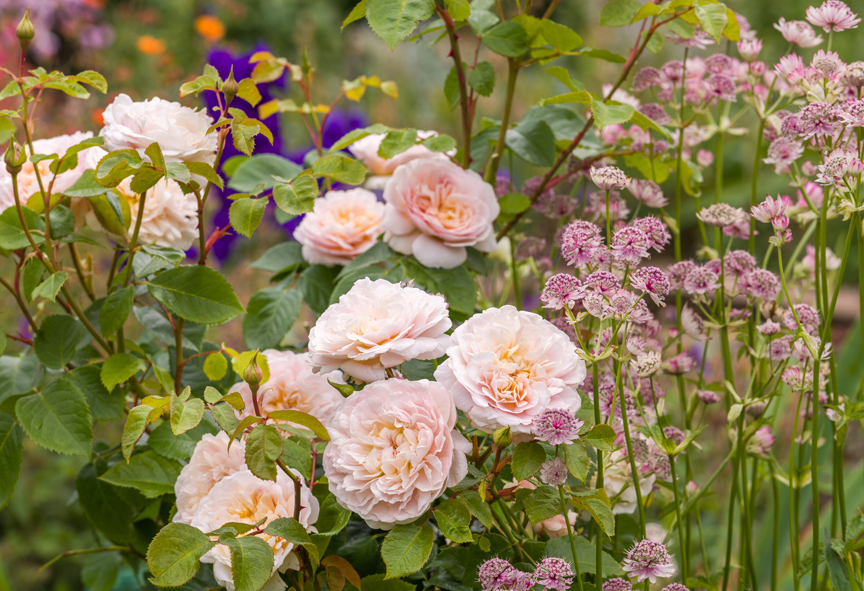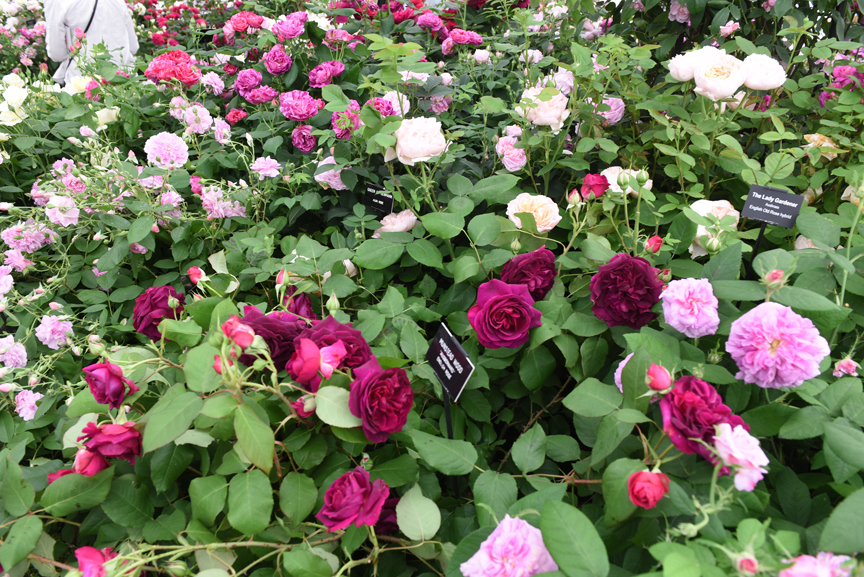David Austin Roses history and new varieties
Posted on: January 23, 2020 | Written By: Doug Oster |
The last time I saw Michael Marriott, he was showing off beautiful David Austin Roses at the Chelsea Flower Show in England.
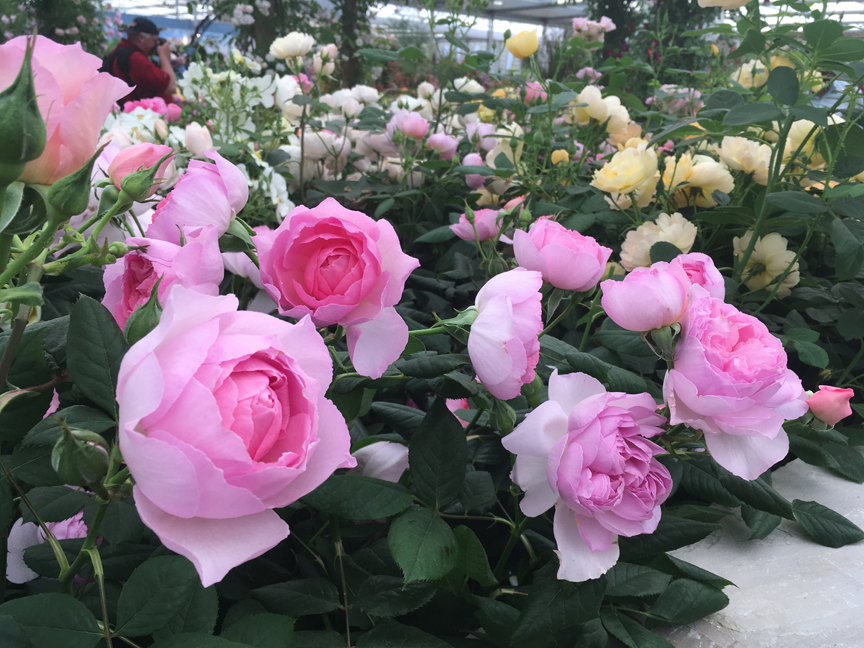
These are some of the David Austin roses on display at the Chelsea Flower Show in London in 2017. Photo by Doug Oster
The technical manager and senior rosarian for the company was surrounded by a stunning variety of flowers. Filled with enthusiasm, he deftly described fragrances and disease resistance of these beautiful blooms. He’s a gardener’s gardener, thrilled to discuss anything from perennials to creating garden beds or even his disdain for a newly introduced variegated annual.
Memories of David Austin
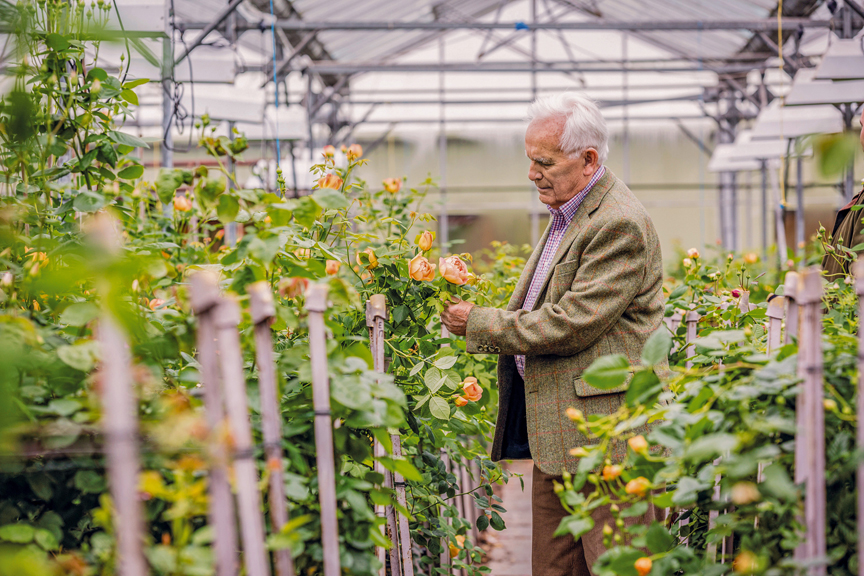
David Austin Sr. checking flowers on a prospective parent, Rosa Lady of Shalott, in the hybridising greenhouse. Photos by David Austin Roses
In a recent interview though, it was sad to discuss the passing of David Austin, who founded the company and died in 2018 at age 92. Austin and Marriott had worked together for more than 30 years, and Marriott speaks fondly of his late boss.
“There was definitely a friendship there,” he says of his relationship with Austin. “I have great respect for him.”
He describes Austin as driven to create the best roses possible.
“To him, always the breeding came first,” Marriott says affectionately.
Austin left a great legacy in form of the plants he created.
“I don’t know who else you could say who has done so much to change the world of roses,” he says. “He helped resurrect the love of the rose and change the way they were planted.”
Austin preferred to intermingle roses with other plants in the garden as opposed to grand beds filled with only roses.
David Austin’s early years
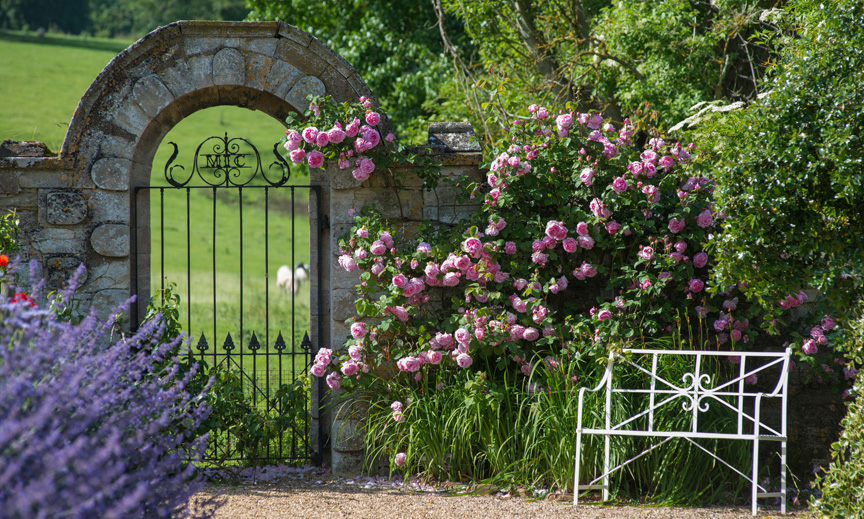
‘Constance Spry’ is an early introduction, in 1961, by David Austin Roses.
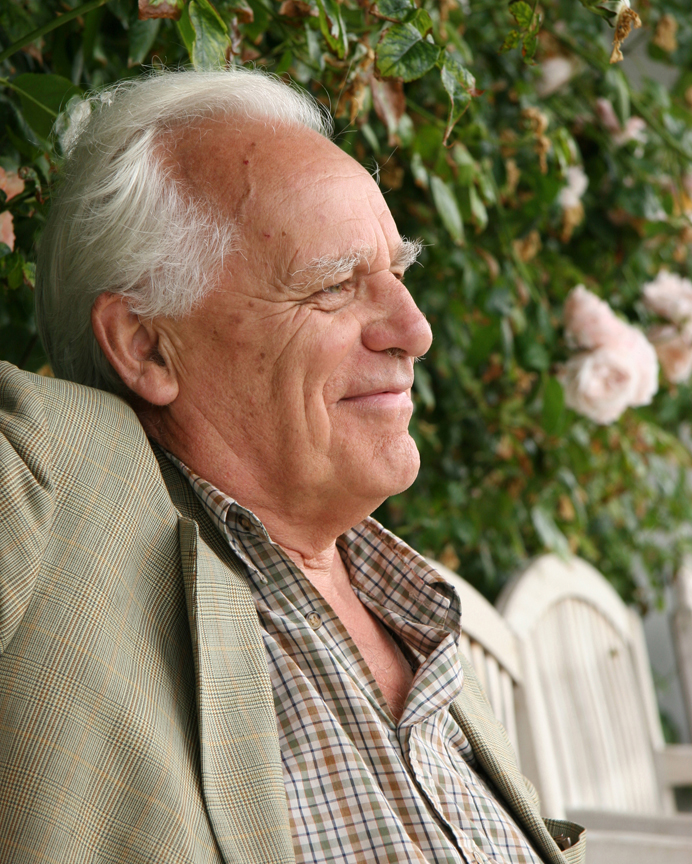
David C. H. Austin, whose English Roses have captured the imagination of gardeners and rose lovers worldwide, passed away peacefully at home in Shropshire, England on Tuesday, December 18, 2018.
Austin’s love affair with roses began on his 21st birthday when his sister gave him a copy of “Old Garden Roses” by A.E. Bunyard. He began growing some of the old roses and the newer hybrid teas. Seeing positives in both types, he longed to create a rose with the beauty and fragrance of the old roses but with the benefits of modern cultivars.
His first introduction was ‘Constance Spry’ in 1961, which has stood the test of time and is still on the market. The summer blooming climber has large rose pink flowers with strong “myrrh” fragrance. Nurseries unfortunately balked at the idea that gardeners would purchase this “old-fashioned rose.” Undeterred, he sold the variety and other roses he loved out of his home in Shropshire, England.
His breeding efforts continued through the 1960s with the introduction of what he called “English Roses.” They were fragrant, repeat flowering varieties with the charm and beauty of the older varieties.
His breakthrough came in 1983 at the Chelsea Flower Show with the introduction of ‘Graham Thomas,’ and two other roses that were embraced by the press and public alike. A year later the first of many gold medals at the RHS Chelsea Flower Show was awarded to David Austin Roses.
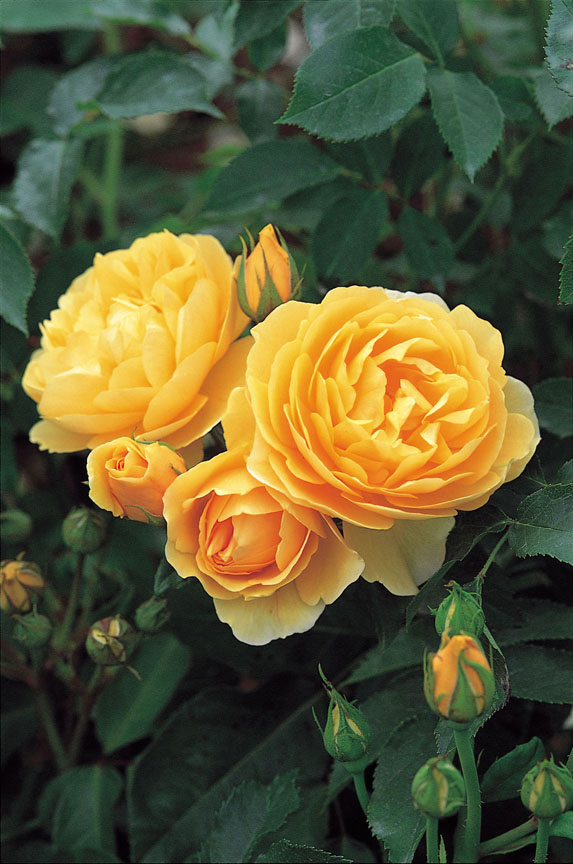
‘Graham Thomas’ was a hit with gardeners at the Chelsea Flower Show, it was a breakthrough for David Austin Roses.
His breeding work continued for decades, releasing a wide variety of plants and working also on disease resistance. As they became more popular, he would be known as the father of English Roses. Austin was quoted as saying, “Every day, I marvel at my good fortune to have been able to make a life out of breeding roses. My greatest satisfaction is to see the pleasure my roses give to gardeners and rose lovers around the world.”
Marriott’s responsibilities

“I have become a rather compulsive sniffer,” admits British rose expert Michael Marriott. “It’s a natural reaction to lean over and sniff a flower. If there’s no fragrance you’re disappointed.
Marriott has used his design skills and horticultural knowledge to create spectacular rose gardens around the world. They include the Rose Garden at the Royal Botanic Gardens Kew, Queen Mary’s Rose Garden in Regent’s Park, Hampton Court Palace and others.
One of his jobs is testing the fragrance of the flowers. There’s actually a scientific procedure to rate fragrance involving the analysis of air captured from the blooms, which reveals the hundreds of oils each flower emits.
“Of course that means absolutely nothing at all,” he says with a laugh. “At the end of a day all you can do is put your nose to it and smell it. When it comes to something like fragrance, does it smell nice? That’s as complicated as it needs to be really.”
For years he teamed with Robert Calkin, known as the famous rose nose, but each person can interpret the aroma of anything differently.
“I might smell bananas and you might smell mangos, and we’re both right,” he says.
With tongue firmly planted in cheek, he adds, “It’s the most awful job having to walk around all day long sniffing roses with him.”
Marriott’s all-time favorite rose for fragrance is ‘Buttercup.’
“That was the one rose he couldn’t actually describe,” Marriott says of Calkin. “He would say ‘I don’t know; it’s just a gorgeous fragrance,’” Marriott reminisced about his friend.
It’s one rose that Marriott always smells when he walks the garden, even once catching the aroma of cocoa powder from the yellow flowers.
New introductions
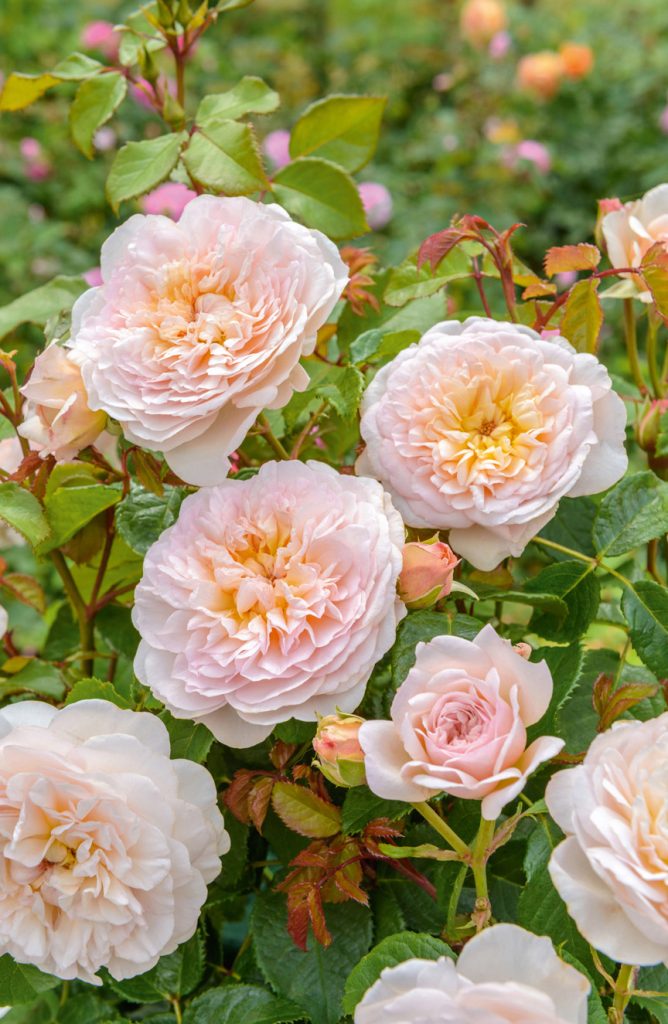
‘Emily Bronte’ is one of the new introductions from David Austin Roses.
The aroma of roses will change from hour to hour, day to day, season to season and year to year, he adds. A new introduction from David Austin Roses, ‘Emily Bronte,’ named for the famous novelist, is a good example of the variations in scent. “It’s initially a tea fragrance, then it changes to an old rose fragrance and later on it becomes more a citrusy fragrance,” he says of the new rose.
Besides being heralded for its strong fragrance, the plant reblooms and is highly disease resistant. The flower begins to bloom with soft pink flowers and deepens to apricot as it ages. “That’s a really classic English rose which I think will be available for a very long time,” Marriott says.
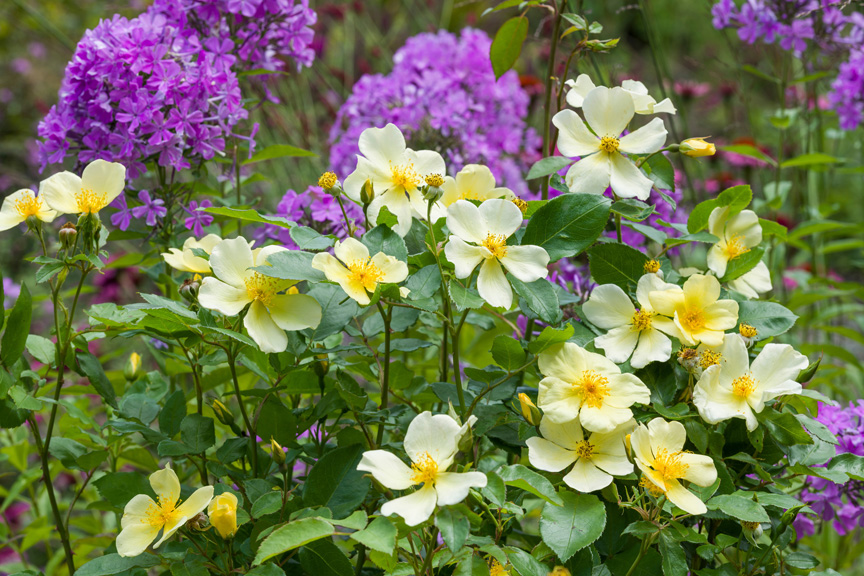
‘Tottering by Gently’ is a unique new introduction from David Austin Roses.
Also being released this year is ‘Tottering by Gently,’ a name that surprised Marriott after David Austin Jr. told him what it would be called. It’s named for a cartoon from Country Life Magazine drawn by artist Annie Tempests.
“It exemplifies what David was very keen for,” Marriott says, “not to have all of his roses look the same.”
This is a single yellow flower with five petals that have a musky scent. It’s a repeat bloomer and sets a beautiful crop of hips in the fall.
“Variety is just so important,” he adds.
A plantsman’s legacy
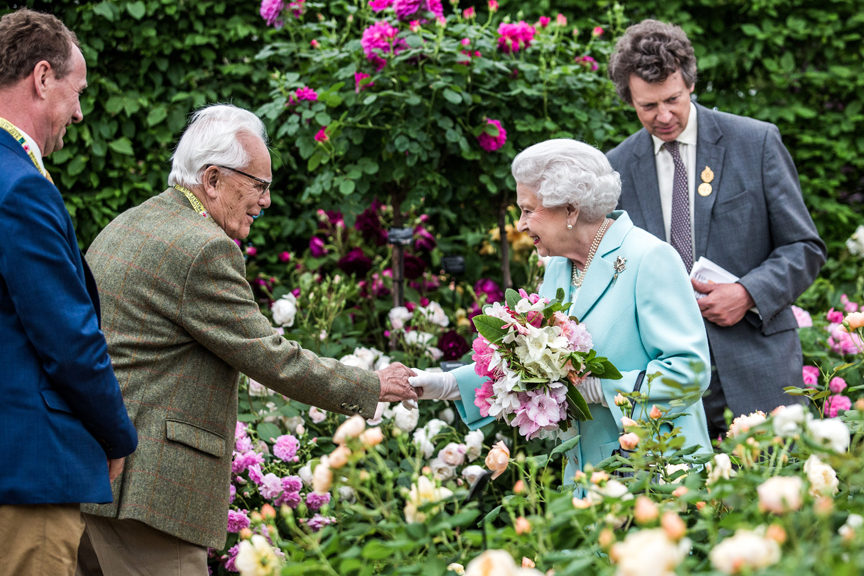
Britain’s Queen Elizabeth II is greeted by David C. H. Austin, both then 90 years old, at the David Austin Roses garden at the 2016 Chelsea Flower Show in London on May 23, 2016. Behind Mr. Austin is his son David J. C. Austin, managing director of David Austin Roses.
When thinking about his decades working with David Austin and the roses that have been released over the years, Marriott remembers what was most important to the founder of the company.
“What (Austin) was always after was all those positive characteristics — beautiful flower, wonderful fragrance, maximum health — but the most important characteristic for him was an overall beauty, what he called charm,” Marriott says. “A lot of people recognize that, and that’s why I think the Austin roses have become so popular.”
Read the companion story, “How to grow roses organically.”
Doug Oster is editor of Everybody Gardens, a website operated by 535Media, LLC. Reach him at 412-965-3278 or doster@535mediallc.com. See other stories, videos, blogs, tips and more at everybodygardens.com.
More from Everybody Gardens
Roses are a family heirloom for this gardener.
Garden journal reveals grandfather’s love.
Rolling Stone keyboard player in tune with music, environment.
